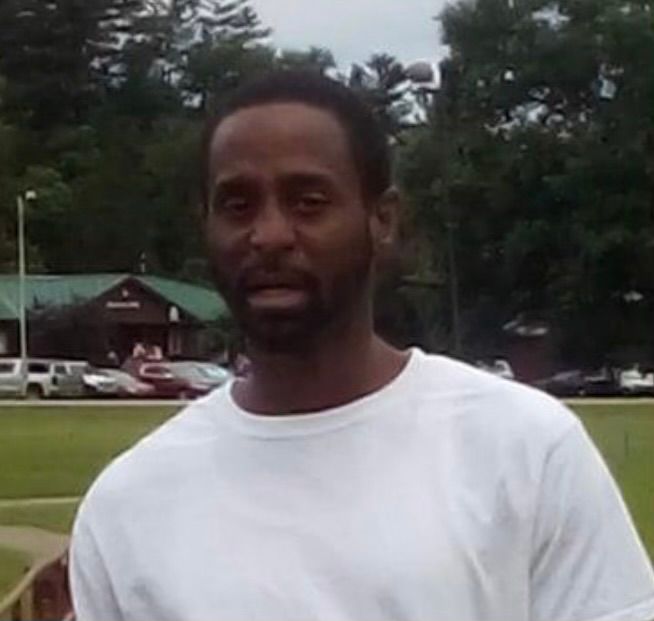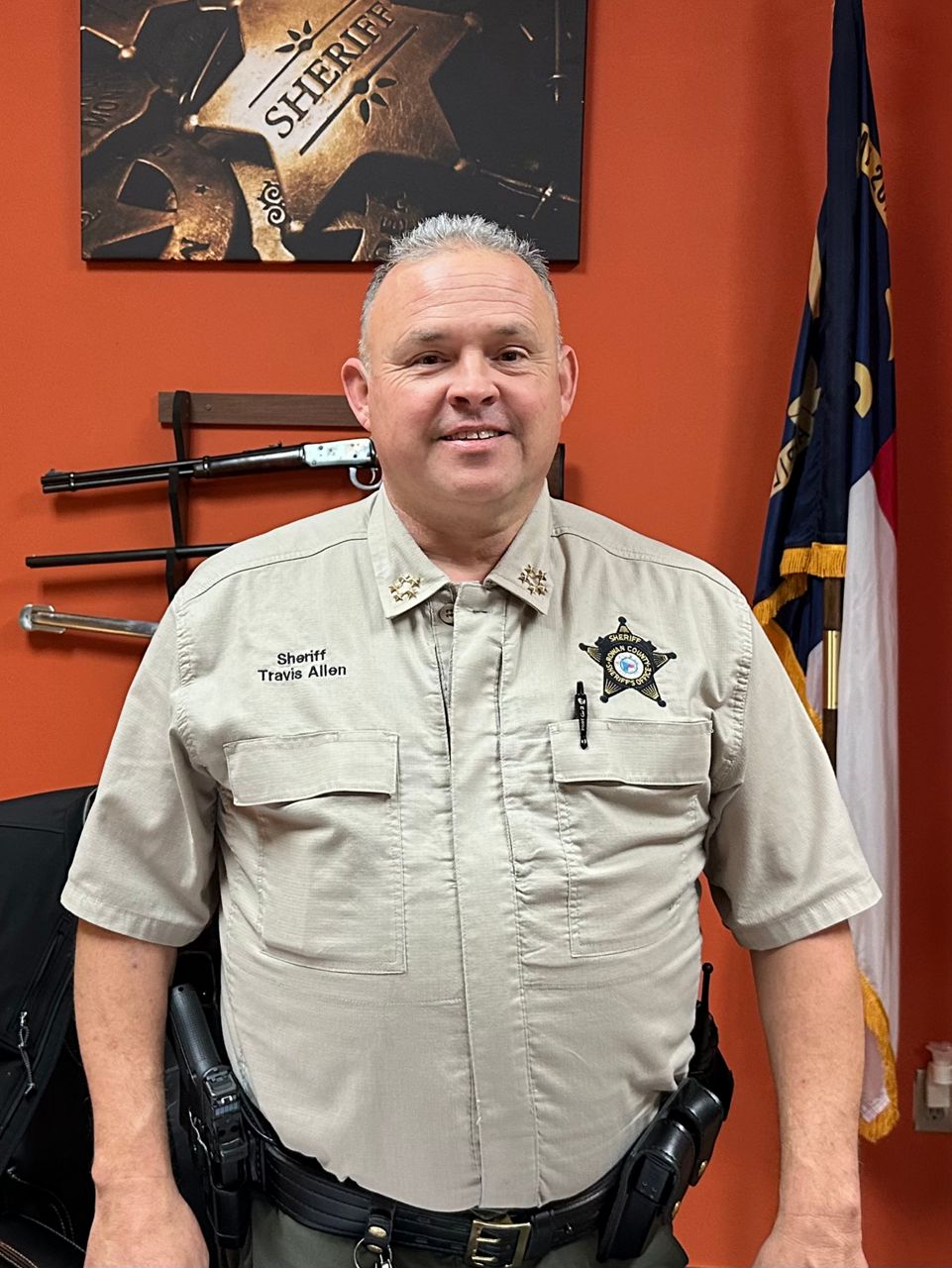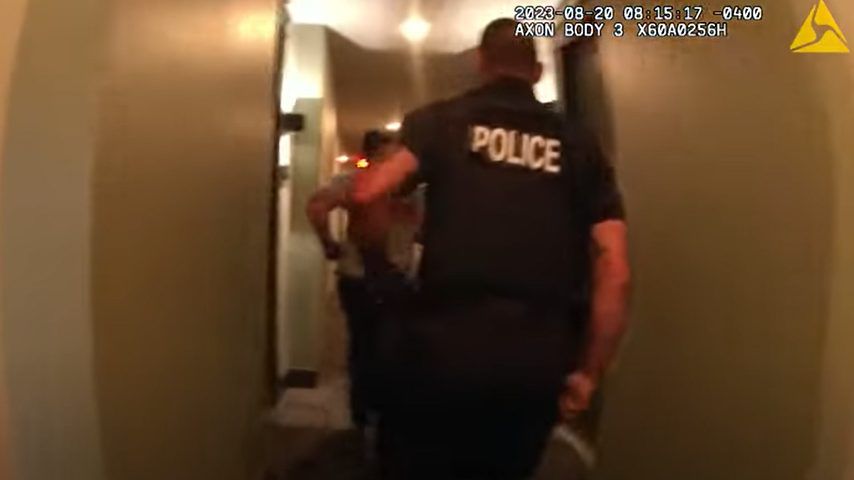Both sides agree on the basic facts of the case. Sylvester Selby had a stab wound to the heart when deputies arrived at the home in Manteo at about 11:30 p.m., court filings show. He was carrying a kitchen knife. He stumbled as he walked down the stairs towards the deputies and tripped over a bicycle.
As Selby fell, Dare County Deputy Edward Glaser shot him.
Selby, 44, was on the ground and trying to get up when Glaser shot him two more times, according to court filings from both Selby’s family and the sheriff’s office.
That’s where the agreement stops. Selby’s family, in a federal lawsuit, argues he posed no threat to the deputies when they shot and killed him. The deputy and the sheriff’s office say he did pose a threat, and the shooting was justified.
The family said the deputies were responsible for Selby’s death. In the sheriff’s office response to the lawsuit, lawyers said Selby had already been stabbed in the heart and would have died anyway. It’s still not clear how Selby was stabbed in the first place.

“Edward Glaser and the Dare County Sheriff’s Office know Sylvester Selby wasn’t a threat,” said Harry Daniels, a civil rights attorney representing the Selby family.
“He was 25 feet away, stumbling in the opposite direction and bleeding out from a chest wound the first time Glaser shot him and he was unarmed, defenseless and on his hands and knees the second and third time he fired,” Daniels said.
“The fact is that Sylvester Selby was calling for help and instead of making sure he got to a hospital or finding out who stabbed him, they killed him,” he said.
Selby’s shooting on Oct. 2 was one of 60 shootings by law enforcement in North Carolina in 2023. Forty people died. Selby was number 32.
Spectrum News 1 documented each shooting over the course of the year and created a new database to document these shootings. The database and interactive map are public and include details of each police shooting in North Carolina beginning in January 2023.
There is no statewide database documenting police shootings, according to the State Bureau of Investigation, which is tasked with investigating these incidents.
Local police departments, sheriff’s offices or the district attorney have to request the SBI come in to investigate police shootings. Spectrum News 1’s investigation found that in 2023, the SBI investigated every case when someone was injured or killed in a police shooting.
SBI agents investigated 56 cases of what law enforcement agencies call “officer-involved shootings” in 2023.
That doesn’t include all 60 police shootings over the course of the year. One involved an SBI agent, so the Apex Police Department did an independent investigation. In the three other cases, no one was injured, according to the agencies involved.
The number of police shooting cases investigated by the SBI has been steady in recent years, according to case numbers from the agency dating back to 2018. There was a small spike in 2020, when the SBI investigated 61 cases. That number was 58 in 2021 and 56 in 2022.
The SBI investigated the Selby case, sending in agents quickly after the shooting. The report from that investigation went to a special prosecutor appointed by the local district attorney, but there’s been no word on whether the case could go to a grand jury.
The findings of the investigation have not yet been made public. The SBI’s findings in these cases are generally released by prosecutors either when there’s a decision not to prosecute, or in open court if officers are charged.
Daniels said the Selby family could not talk about the case now that a lawsuit has been filed. He also declined to talk about the criminal case.
The shooting was caught on body camera video, but that footage has not been made public. Daniels said his legal team, and the Selby family have seen the video from that day.
It was Aug. 20 at about 8 a.m. at an upscale apartment complex in Charlotte’s South End.
When the officers finally managed to kick their way through a blocked door and into the apartment, they found a chaotic scene. A woman, screaming from a bed, had been shot. A man had a gun. Body camera video appears to show the man drop the gun before he lunges at an officer and knocks him to the ground.
A second officer pushes the man, identified as Peter Corey, 27. But Corey comes up swinging a knife at Charlotte-Mecklenburg Police Officer Shawn McMichael, stabbing him in the side of the head. There’s the sound of one gunshot in the video. Officer Tyler Bourque shot Corey.

Medics rush in to treat Corey and the injured officer. Corey did not survive. McMichael was taken to the hospital with serious injuries.
“I am so proud of the lifesaving, heroic actions of the Charlotte-Mecklenburg Police Department’s officers during this incident,” CMPD Chief Johnny Jennings said in December after a judge approved release of the video.
“We routinely train for situations like this involving active violence. Officers Bourque and McMichael rose to their training, putting their lives in extreme danger for the sake of the protection of innocent life,” he said.
“Police officers are never able to predict the circumstances that they are about to encounter. This case highlights the dangers they face and how quickly a threat can present itself,” the chief said.
When police and deputies go into a home, whether they hear someone screaming for help or they are serving an arrest warrant, they can’t know for sure what they’re walking into.
About 45 minutes up the road from Charlotte, outside of Salisbury, North Carolina, another case shows how things can escalate quickly.
Rowan County deputies surrounded a home in a rural area. They were acting on a tip that two wanted men, Jordan Mays and Jeremy Brock, were inside, according to the sheriff’s office.
They found Brock in a garage, and he was arrested without incident, according to a statement from Sheriff Travis Allen issued days after the shooting. Five deputies then made their way into the single-wide trailer as they searched for Mays.
Mays had arrest warrants for failing to appear in court on charges of carrying a concealed weapon, possession of firearm by a felon, driving while license revoked and a probation violation, the sheriff’s office said.
The deputies found Mays in a bedroom with an unnamed woman, the sheriff said. What came next was fast and violent, he said. There was a handgun on a bedside table, Mays refused to put up his hands, Allen said.
“Body camera video shows Deputy Adam Dyles going hands on with Jordan Mays. Deputy Dyles struggles with Mays on the bed and then into the floor of the small bedroom trying to secure Mays’ hands. Deputy Chase Safrit is also attempting to get to Jordan Mays but is hindered by the size of the small room and clutter around the bed,” Allen said in the statement.
Master Deputy Travis James was in the doorway with an AR-15 rifle pointed at Mays, he said.
“At this time, one of the Deputies yells for one of the others to ‘Tase him.’ Upon hearing this, Jordan Mays is able to come up off the floor/bed with Deputy Dyles still on his back,” Allen said.
Mays took the gun from the bedside table and turned toward the deputies, Allen said.
James fired five rounds from his rifle at close range, with one hitting Mays in the head, the sheriff said. The whole encounter lasted seconds, he said. It was Feb. 14.

Deputies found three handguns in the bedroom, the sheriff said. They also found more than $3,000 in cash and a “large amount” of crystal meth, he said.
These shootings happen fast. Deputies and police officers always have to be ready for the worst, the Rowan County sheriff said in an interview in January, almost a year since the Mays shooting.
“It’s not TV. They’re scared. They’re just as scared as you and I would be in a situation. Yet they’re having to be scared, deal with their fear, and evaluate the situation, all in the blink of an eye,” he said.
“This is something that happens very reactionary, very quickly, very fast. It’s nothing that officer plans on doing that day,” he said. “I’ve been a law enforcement officer for 29 years. I’ve never had to do that. I’ve pulled my weapon numerous times, but, thank the Lord, I’ve never had to make that decision.”
There are no “good shootings,” Allen said, but there are “bad shootings” when a deputy or officer shoots someone without justification. Allen, like a good portion of people across the country, has watched the videos of the egregious shootings that made national headlines.
He argues that in many of these shootings, the officer never should have taken out their gun.
“I don’t see bad cops. I see scared cops,” Allen said.
“We’re preparing a lot of young people to handle the job socially, but we’re not preparing them for the violent part,” he said.
What happens if a police officer tells someone they are under arrest and that person says, “No, I’m not”? That’s one of the questions that stands out to Allen as he’s bringing in new deputies. He doesn’t want to hire someone with a history of violence, but he does want deputies who can handle themselves in a fight without pulling out their gun.
“If you use a Taser and it doesn’t work, what’s your next move? Because it’s going to get bad,” Allen said.
Each of these cases, in Manteo, Charlotte and Rowan County, was captured on body cameras worn by police and deputies, but only the video from the shooting in Charlotte has been released to the public.
Civil rights groups, local, state and federal officials, and law enforcement agencies themselves have worked for years to get body cameras to officers. The small black cameras, affixed to an officer’s chest, have become standard for most police departments and sheriff’s offices in North Carolina.
To have each of these shootings recorded on video is itself a success for the community groups advocating for police transparency and accountability. But for the advocacy groups that thought this new era of body cameras in North Carolina would bring automatic transparency and a flood of video from police, it’s also been a disappointment.
“North Carolina has been very calculating in not allowing the citizens of North Carolina or the general public to see via body camera footage and/or dash camera footage what actions or inactions or acts, being good or bad acts, related to law enforcement shootings,” said Daniels, the lawyer for the Selby family.
Daniels has also represented other families in North Carolina and elsewhere in police shooting cases.
Body camera video is not a public record in North Carolina. A state law, passed in 2016 and amended in 2021, requires a court order to make body camera or dash camera video public.
Republicans who supported both updates to the body camera laws said the requirement to go to a judge took the politics out of it, and take the decision to release the video out of the hands of police departments.
A judge has to sign off on it for a family and their lawyers to be able to view body camera footage of a fatal police shooting. Even then, families and lawyers can only view the video and take notes. They could face criminal charges if they make a recording of the footage.
“When it comes to law enforcement, laws and rules and policies are created to insulate law enforcement, to protect law enforcement and not to protect people,” said Dawn Blagrove, an attorney and the executive director of EmancipateNC, a civil rights advocacy group.
“We thought it would be an objective tool used to fairly and objectively measure the performance of law enforcement,” she said. “It’s been a huge disappointment.”
Blagrove routinely deals with North Carolina’s body camera laws when working with people who say they’ve been abused by police. Even with agencies she has a good relationship with, like the Wake County Sheriff’s Office, it can take weeks or months just to be able to view the video of one of her client’s interactions with deputies.

Pasquotank County deputies shot and killed Andrew Brown in Elizabeth City in April 2021, sparking weeks of protests demanding deputies be held accountable and the county release the video.
A coalition of media companies sued to get the video released. A month later, a judge allowed only a small portion of the video to be released. The full footage is still not public.
Police departments and sheriff’s offices can submit their own petition to make body camera and dash camera video public. That’s what the Charlotte-Mecklenburg Police Department did in the Aug. 20 Peter Corey case.
CMPD has taken it upon itself to get permission to release video in a handful of high-profile cases in recent years.
Blagrove said she has seen police push to release video when it makes them look good.
“They will release the video when they think it will feed the narrative they want to use,” she said. “Body cam footage has become a tool of propaganda.”
Wake County District Attorney Lorrin Freeman said that she tries to release body camera and dash camera video as quickly as she can after a police shooting or if someone dies during an arrest, like what happened with Darryl Williams.
Williams died Jan. 17, 2023, after Raleigh police used a Taser on him several times as they arrested him. The video in that case was released less than a month later.
“I think that level of transparency and accountability is important,” Freeman said. “Part of what we’ve seen over the years is an intensified interest in these cases by the public and wanting to have access to as much of the information as they can.”
Video from body cameras has also changed the way these cases are investigated and, potentially, prosecuted.
Investigators and prosecutors can go frame by frame through the video to see and hear just what happened, at least from the angle of the body camera.



